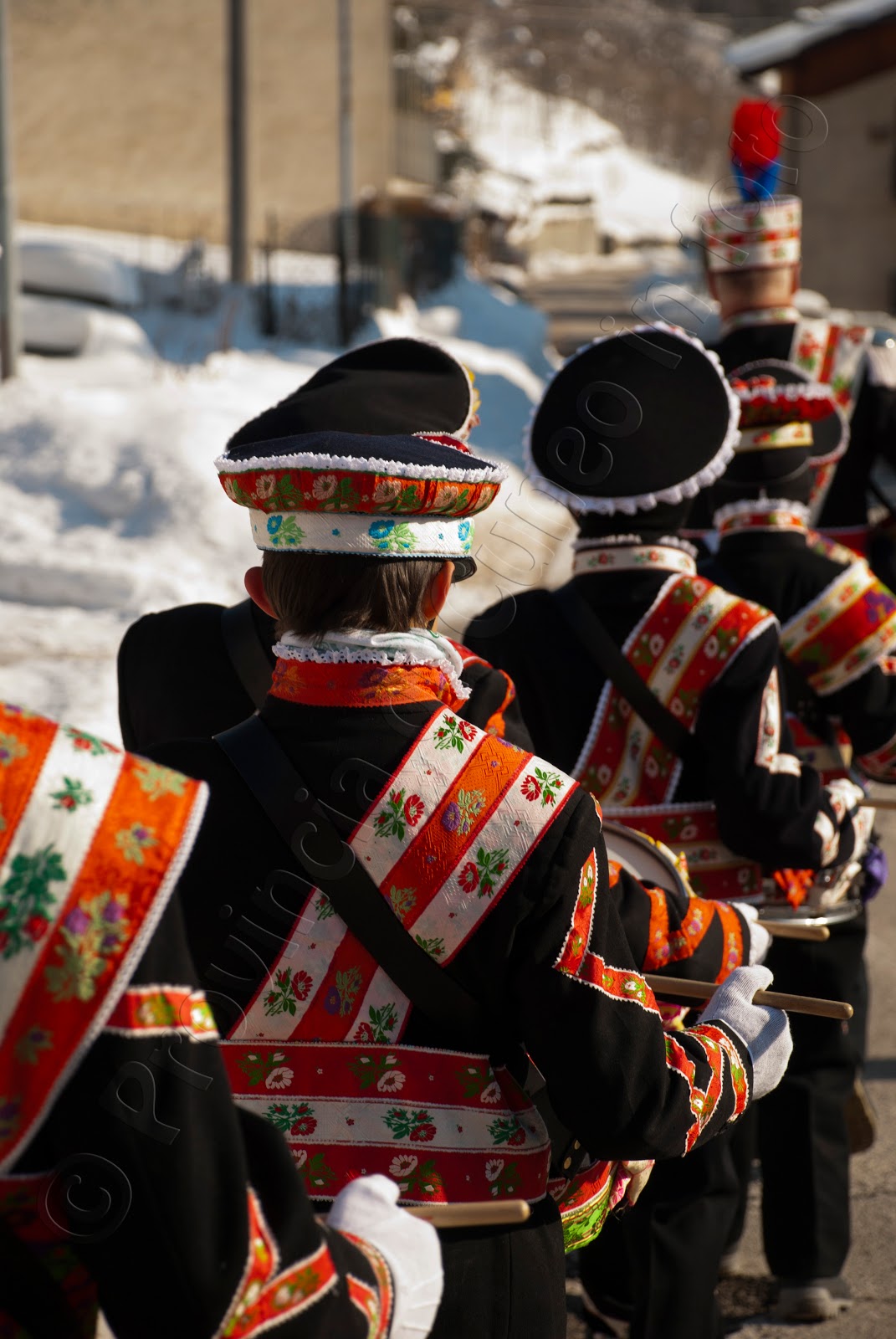E' tempo di Baìo a Sampeyre

Tempo di Carnevale un pò ovunque, tempo di Baìe in Valle Varaita.
Dopo una lunga attesa durata cinque anni ieri è scoppiata la festa nella valle con la Baìo di Sampeyre, quella di Rore, Calchesio e Villar.
Le stradine del capoluogo e delle sue tre frazioni sono tornate ad animarsi di colori, di suoni, di balli e di figuranti che sfilano salutando e chiamando a raccolta la folla con il caratteristico urlo "Baìo".
Questo evento che ha cadenza quinquennale è ben più di un carnevale.
E' una festa tradizionale attraverso cui si rievoca il momento storico in cui, intorno all'anno 1000 il popolo della valle insorge e si unisce compatto per scacciare i Saraceni che con scorribande e razzie aveva messo in ginocchio la popolazione.
Per questo motivo la Baìo è anche l'occasione per festeggiare l'armonia tra le varie borgate.
L'evento si svolge in tre differenti giornate e contemporaneamente nel capoluogo e nelle tre frazioni.
La prima domenica di festa la Baìo di Calchesio fa visita a quella di Piasso (Sampeyre), mentre la seconda domenica avviene lo spettacolare incontro tra le quattro Baìo durante il quale gli Abà, le figure più importanti della festa, incrociano le loro spade in segno di saluto. Il Giovedì grasso in ciascuna Baìo, invece, si accusa il Tezourìe di furto, viene processato e condannato.
Moltissimi sono i personaggi che animano questa festa tradizionale e che sono interpretati esclusivamente da uomini.
Lo stato maggiore è rappresentato dagli Alum composti da due Abà, da un Segretario, da un Tesourìe, dai Pontabandiero e dai Tenenti.
L'esercito è invece composto dai Cavalìe, dagli Escarlinìe e dagli Uzuart.
Il corteo è poi composto da tutta una serie di figure che rappresentano un pò tutta la popolazione che festeggia la liberazione dai Saraceni: i Tambourin, gli Arlequin, le Sarazine, le Segnourine, i Sapeur, i Grec, gli Espous, i Segnouri , i Sounadour, i Morou, i Turc e il Cantinìe.
Chiudono simpaticamente la sfilata il Viéi e la Viéio.
Oltre alla particolarità dell'evento, ciò che attrae i numerosi spettatori sono i costumi indossati dai figuranti, confezionati a mano dalle donne con stoffe variopinte e adornate di fiocchi, coccarde e nastri.
Uno spettacolo nello spettacolo.

It's the time of the Baìo in Sampeyre
It's Carnival time everywhere and it's time for the Baìe in Varaita Valley.
After a wait lasted five years, yesterday began the celebrations in the valley with the Baìo of Sampeyre, Rore, Calchesio and Villar.
The streets of the town and its three hamlets came alive with colors, sounds, dance and parades while the maskers greeted and gathered the crowd with the distinctive scream "Baio".
This event which is held once every five years is more than a Carnival.
It's a traditional feast that recalls the history moment when, around the year 1000, the people of the valley joined together and revolted against the Saracens, that with their incursions and raids had crippled the population.
For this reason, the Baìo is also an opportunity to celebrate the harmony between the various villages.
The event takes place in three different days and at the same time in the county town and in three hamlets.
The first Sunday of the feast, the Baio of Calchesio visits the Baìo of Piasso (Sampeyre), instead the second Sunday all the Baio meet in Sampeyre with a solemn spectacle during which the Aba, the most important figures of the event, cross their swords to greet. The Thursday of Carnivalevery Baio accuses its Tezourìe of theft, try and condemn him. There are many characters that take part in this traditional festival and they are interpreted only by men.
The general staff is represented by the Alum composed of two Abà, a Secretary, a Tesourìe, the Pontabandiero and the Lieutenants.
The army is composed by the Cavalié, the Escarlinìe and the Uzuart.
The parade that follows is composed of a series of figures representing the entire population that celebrates the liberation from the Saracens: the Tambourin, the Arlequin, the Sarazinse, the Segnourines, the Sapeur, the Grecs, the Espous, the Segnouris, the Sounadours, the Morous, the Turcs and the Cantinìe.
Rounding out the parade nicely there are the Viei and the Viéio.
Many visitors come to Sampeyre attracted by the paculiarity of the event and by the costumes of the participants, handmade by women with colorful fabrics and adorned with bows, rosettes and ribbons.




0 comments